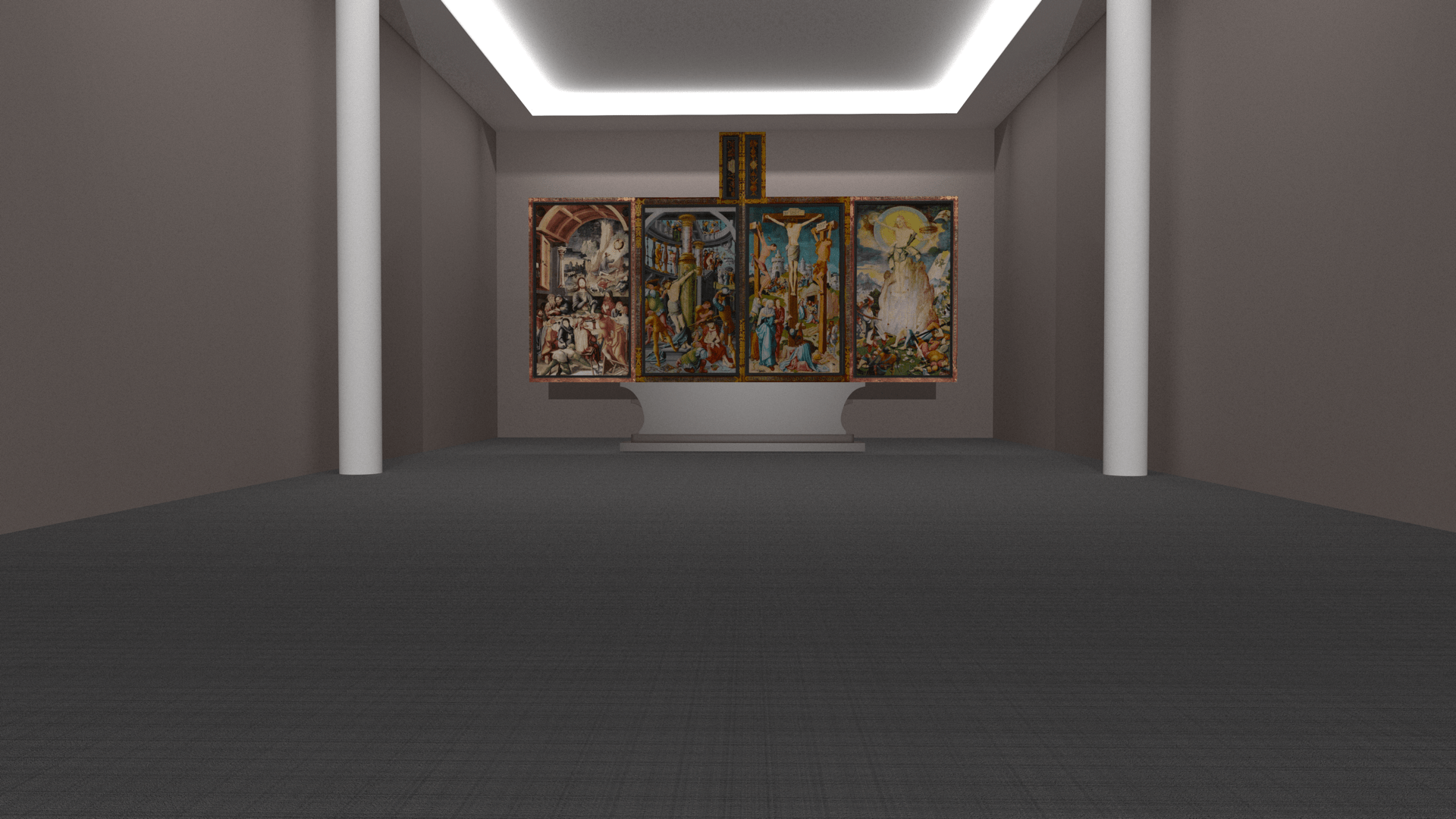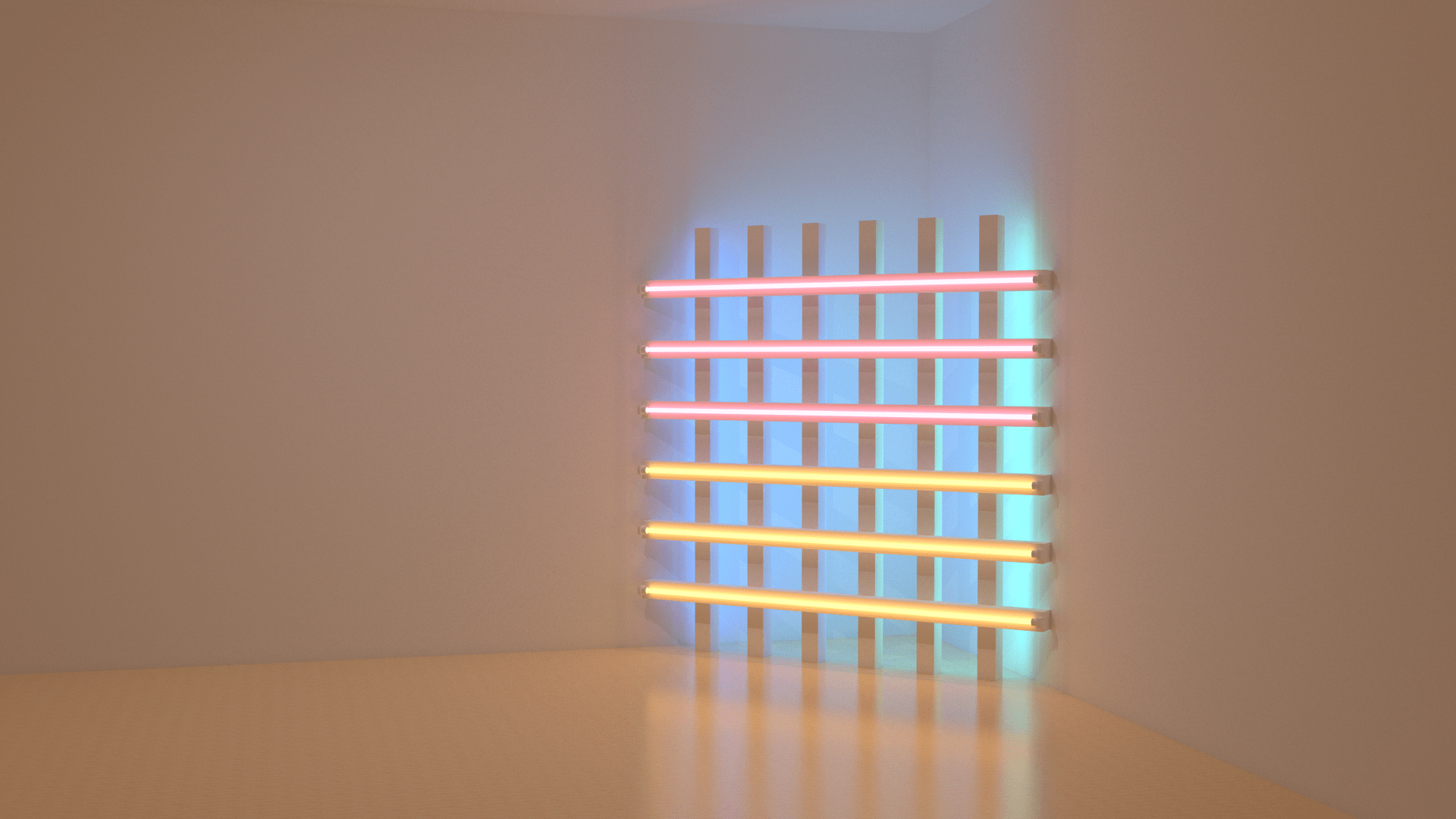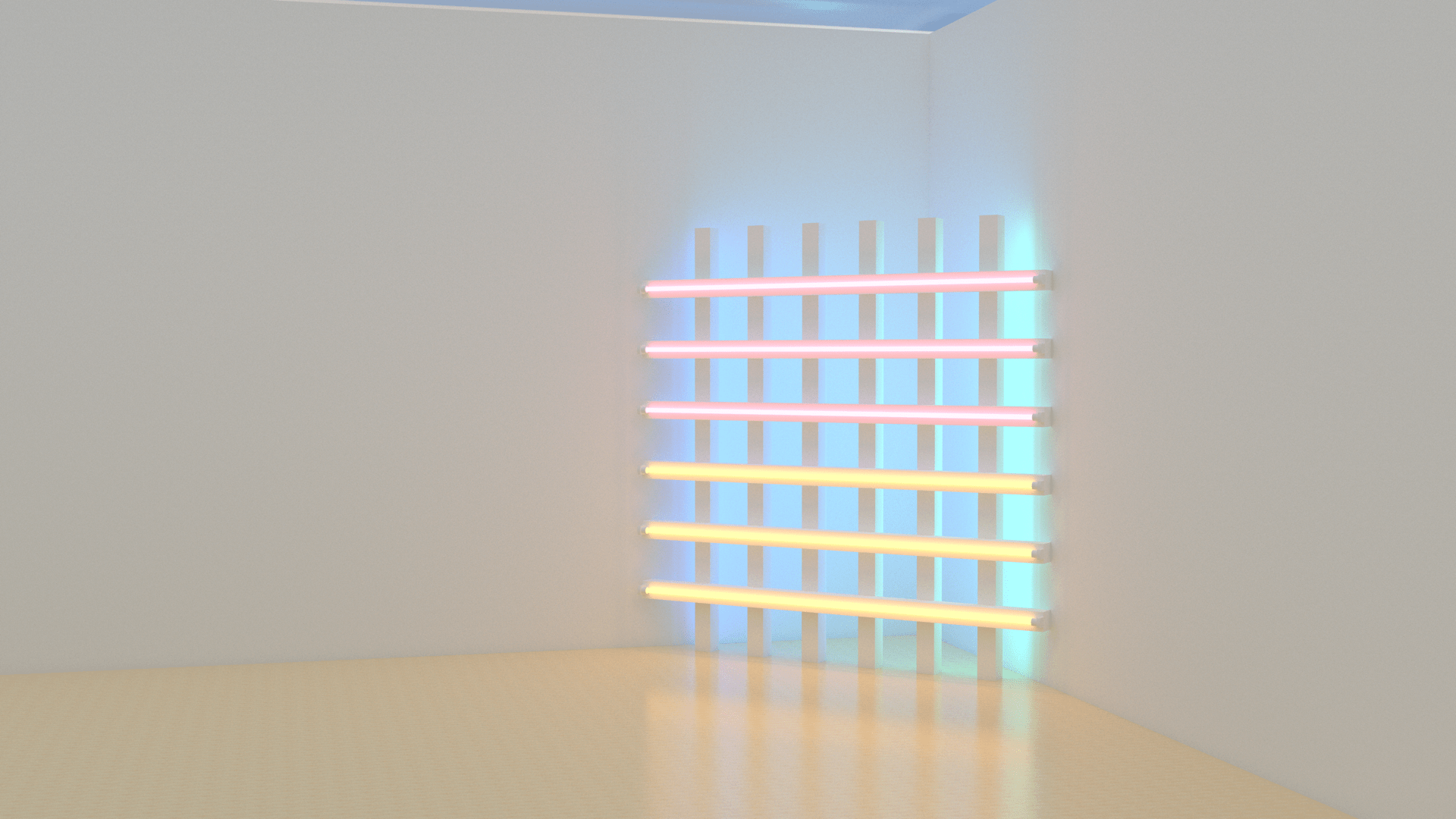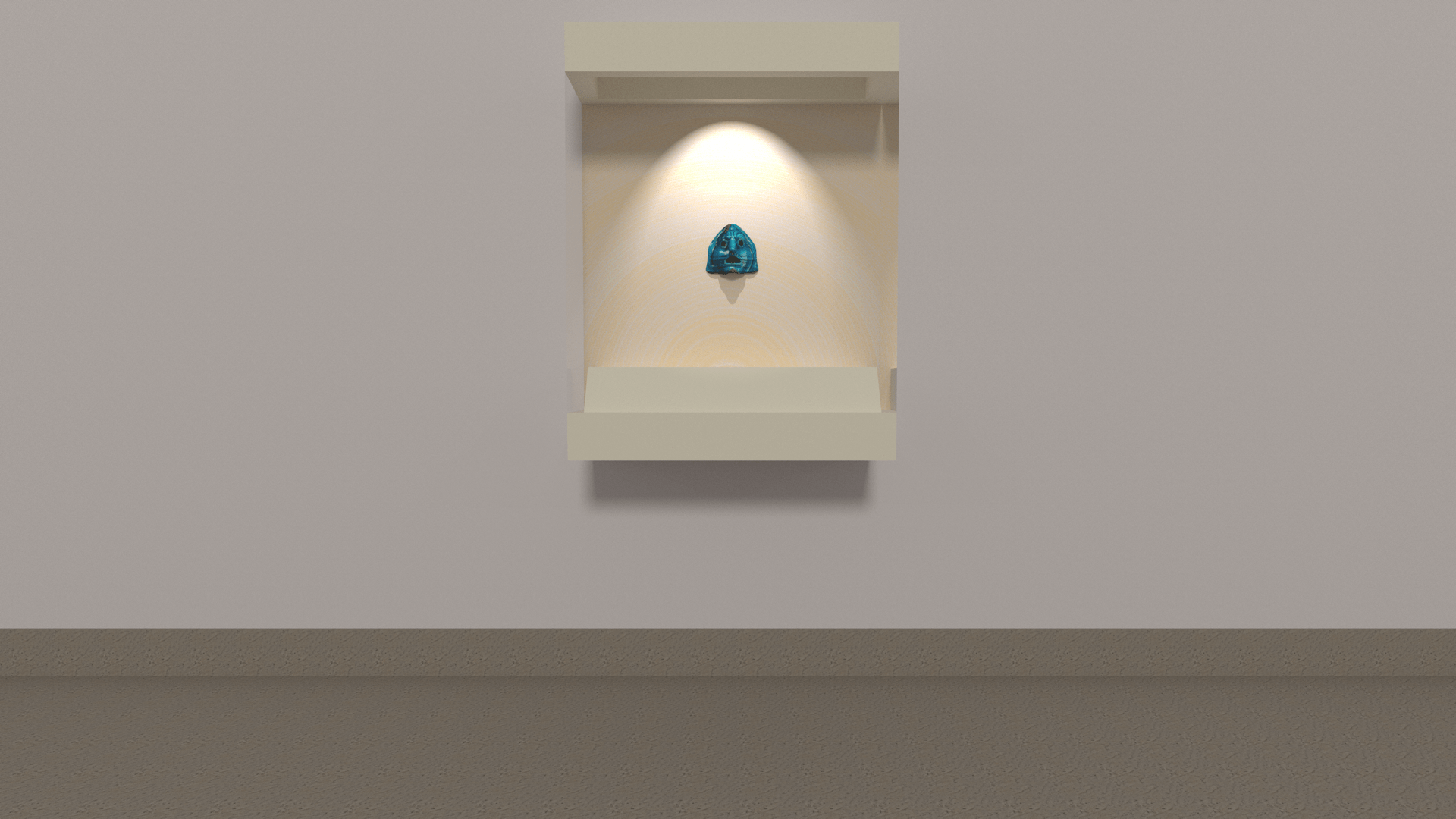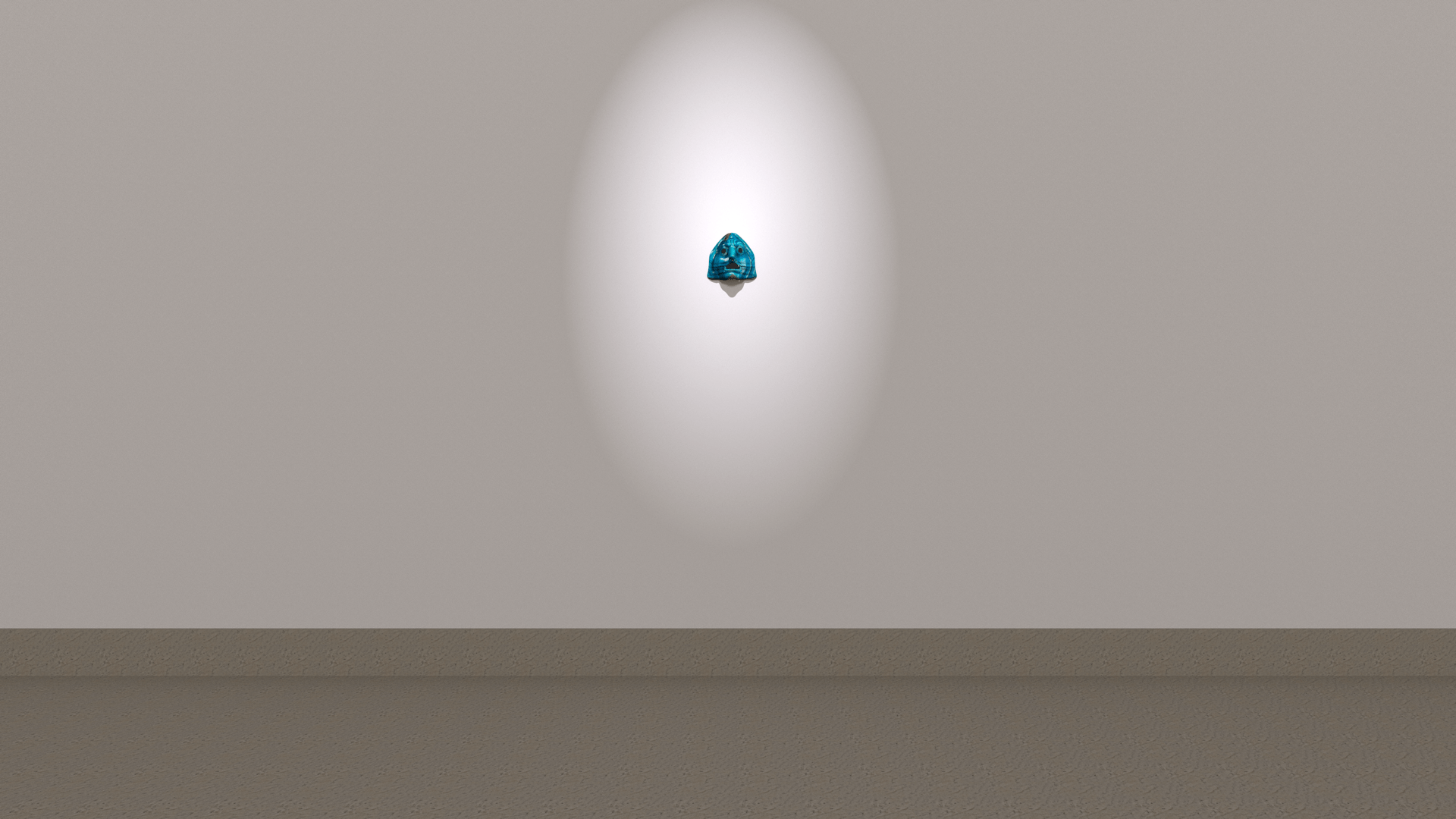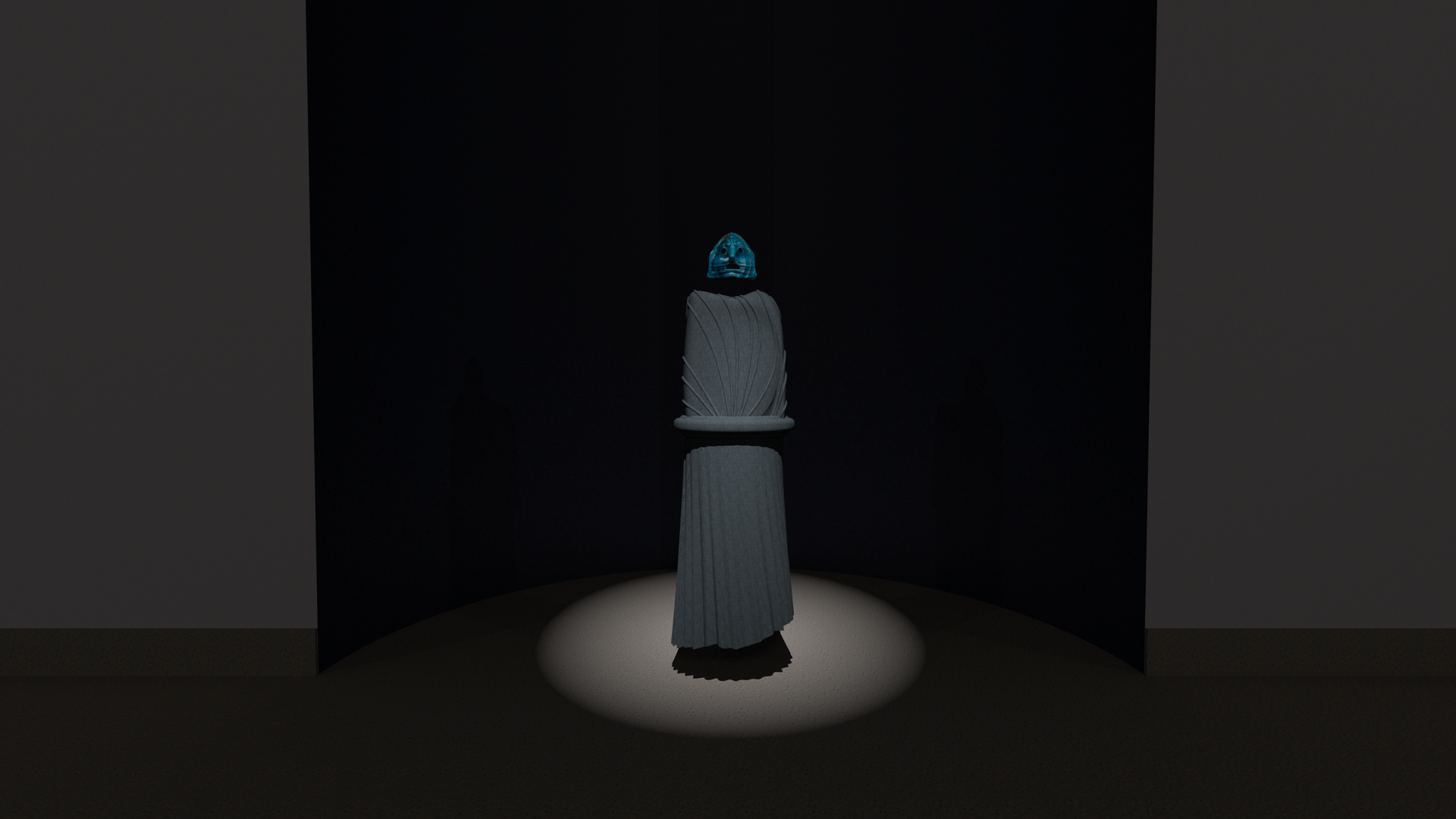Curating Experience
My project explores the relationship between a work of art and the space it inhabits. I examine how modifying the surrounding environment can alter the impact and effect a piece has on its audience. I focused on three works of art which are at the moment all displayed in traditional gallery spaces (white walls, wood floors): the Herrenberg Altarpiece by Jerg Ratgeb, Theatrical Masks and Ram Vessel for Offering from 2nd century AD, and Untitled (in honor of Harold Joachim) 3 by Dan Flavin. For the first two, I was interested in exploring the mask’s and altarpiece’s historical origins, delving deeper into their original functions and how they would have been viewed at the time in which they were made. For the altarpiece, I focused on replicating the original height and viewing angle, while creating a communal experience for viewers similar the one that could have been found in the original chapel. Unique to my space however, I allow visitors to have a full 360 degree view so they can view the back panels, allowing them to see the altarpiece both open and closed simultaneously. For the mask, I wanted to emphasize the interactive nature of ancient theater, inviting viewers to participate in the action and see the mask with other theatrical items of the time period. My goal for Untitled (in honor of Harold Joachim) 3 was different as my research found that Flavin himself was involved in the exhibition of his works and Untitled (in honor of Harold Joachim) 3 was designed for the white wall space. Instead, I used the work as a case study in how small changes affected the piece and viewing experience. I incrementally made changes to the surrounding walls and ceiling such as in their color, transparency, reflectivity, and distance from the work. For example, painting the walls black dampened any light from the work, defeating the artistic intentions, while making the room into mirrors overwhelms the work and viewer with reflections. These choices help illustrate the necessity for careful curation for each work, and how one philosophy or standard is not universally perfect for every piece of art.
Advisors
Eric Bellon (ARCH)
Ian Verstegen (VLST)


